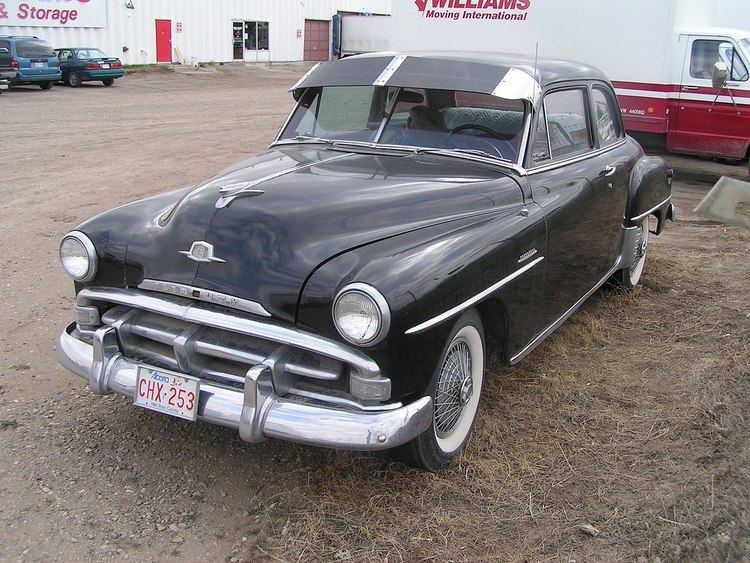Class Full-size | Production 1951–1952 Layout FR layout | |
 | ||
Body style 2-door business coupe2-door fastback sedan2-door station wagon | ||
The Plymouth Concord, was a full-size car, produced by Plymouth between 1951 and 1952. It was Plymouth's least expensive model in its lineup. It replaced the Deluxe, and was replaced by the Plaza from 1954 onwards.
Contents
Models
The 1951 Plymouth line was introduced when "war demands nearly eliminated auto production and restricted access to key metals." The body styles were unchanged from the previous year with the Concord available in a three-passenger business coupe, a fastback two-door sedan, or an all-metal two-door Suburban station wagon. The Concord Series was available in a simple Deluxe trim level. For the new all-metal two-door Suburban station wagon, an additional Special Savoy trim level was available. This upgrade included better upholstery, arm rests, assist straps, storage compartments, and chrome exterior window and belt line trim. The business coupe featured cargo space behind the front bench seat.
The 1952 model year included minor changes to medallions, hood ornament, and script nameplates, but after the midyear an optional electric overdrive unit (for speeds over 25 mph) for the manual transmission (no automatic transmission was available).
The Concord model line was dropped for 1953 and replaced by the Cambridge for the lowest trim level.
Name origin
Plymouth, Massachusetts was one of the first European settlements in North America and is a major city in the state. Two of Plymouth's model lines in the 1950s were named after towns in Massachusetts: Cambridge and Concord.
The name "Concord", was later used by American Motors Corporation (AMC) for its line of compact cars (see: 1978-83 AMC Concord).
The name was resurrected by the Chrysler division after it bought out AMC on its full-size cars (see: 1993-2004 Chrysler Concorde), though it was spelled "Concorde".
